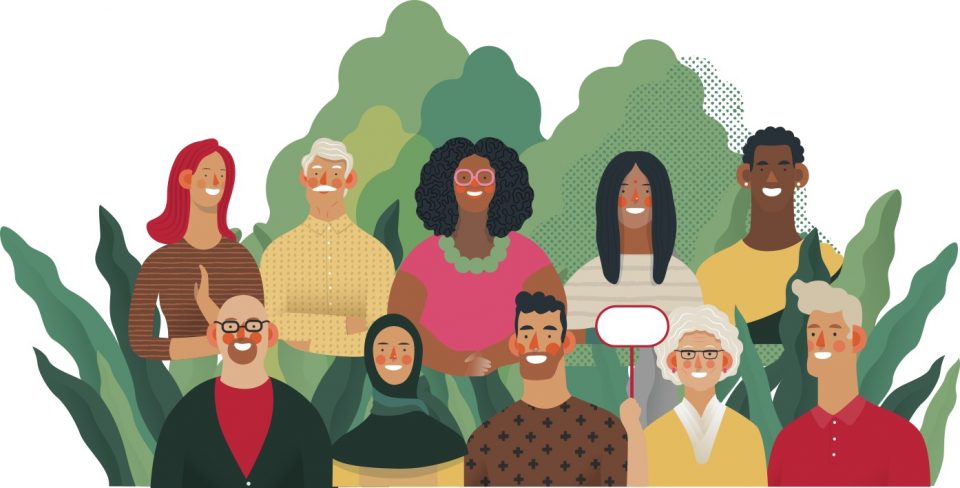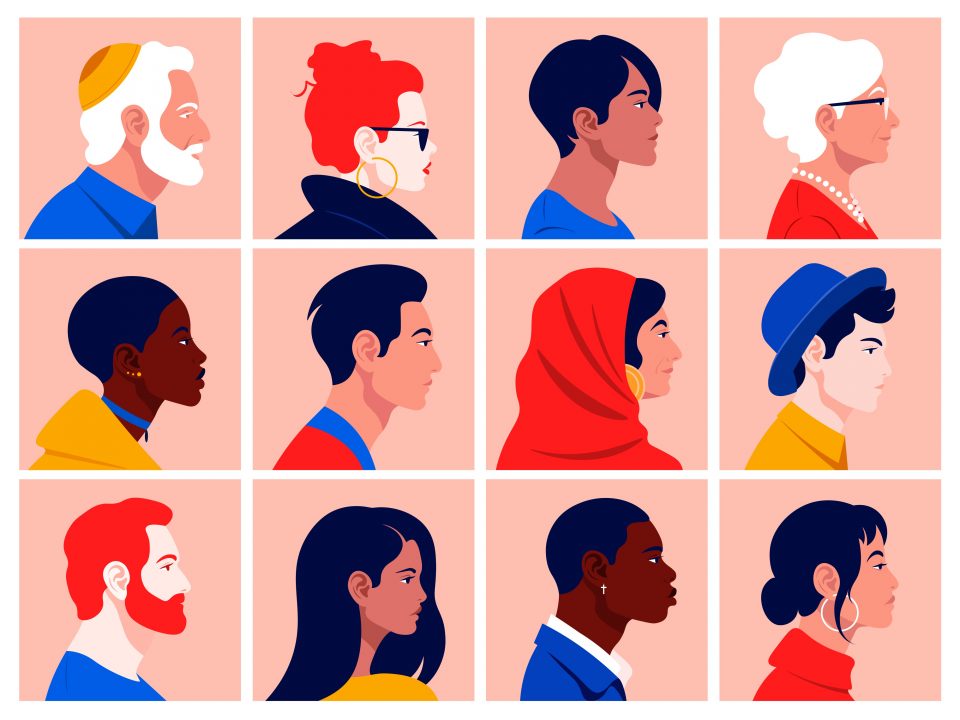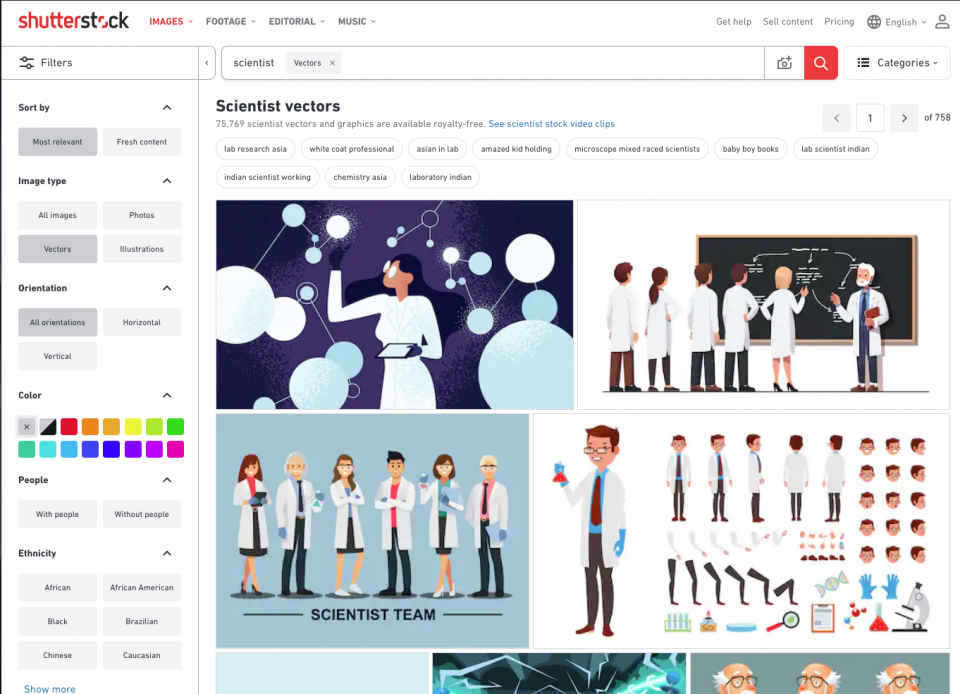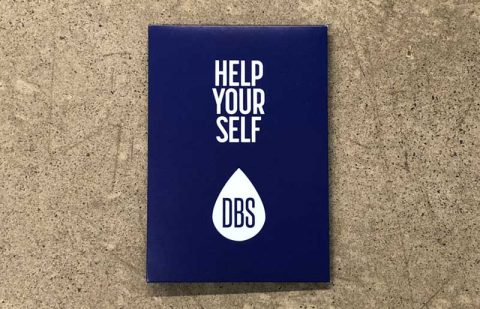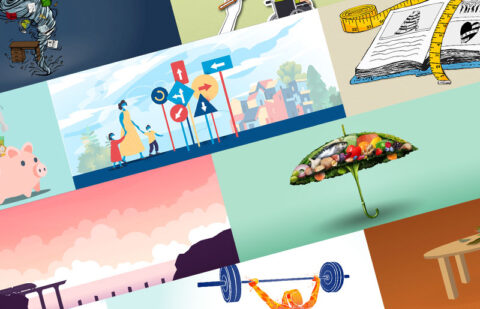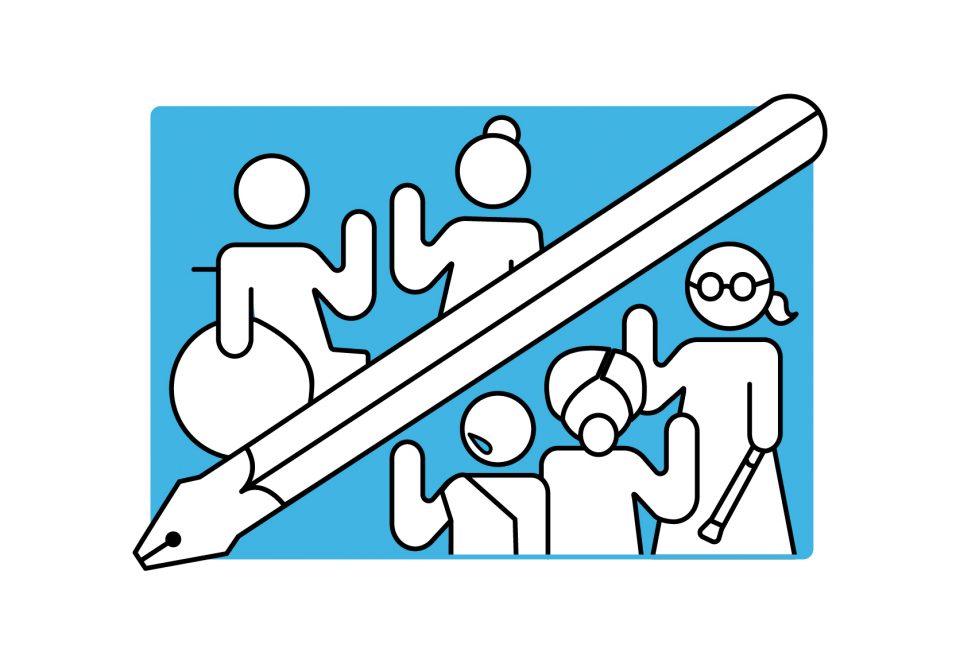
This three-part series explores into how Diversity and Disability are represented in illustrations. We hope it will be helpful for you when choosing illustrations for your next project.
In this post we uncover why representations of Diversity and Disability are important and why our mindset is important when choosing illustrations.
Illustrations are a meaningful way to bring abstract ideas into something tangible. They can visualise stories, ideas, concepts and are a creative way to stand out. The right illustration can help clarify the message behind an idea in an engaging way.
Illustrating an object or concept is relatively easy, however illustrating and designing people can be more challenging. The choices you make represent your organisation and as a result how people see your organisation.
Representing diversity, multiculturalism, equality and disabilities in illustrations is a fundamental part of depicting an inclusive identity. Defining the right illustration style for inclusive identity can make or break how much inclusivity is represented. When choosing an illustration style, it is important to note that as more details are added to an illustration of a person, the more difficult it can be to illustrate the nuances of diversity.
Assumptions and Biases
As both the illustrator and audience of an illustration, we must address our own internal assumptions and biases when illustrating or looking at an illustration. Diversity in illustration doesn’t just mean changing a skin colour or adding cultural features but also challenging the ‘default’ pre-assumed biases we have.
Challenge the Default
The idea of the ‘default’ is having your preconceived biases (age, culture, race, ability status, sexuality, role) affect your judgement towards other people and illustrations. For example, when we think of a scientist, we may default think that a scientist may be a Caucasian older man, or that a teacher is a middle-aged woman.
We can challenge these pre-assumed biases by putting underrepresented groups of people into positions of power in our illustrations. For example, challenge the idea that teachers are just women by choosing illustrations or illustrating a teacher as a man of colour with hearing aids or with a prosthetic. Illustrations should reflect our reality, and that is that the world is diverse, multiculturalism is the norm, and people around us may have disabilities too.
Don’t Perpetuate Stereotypes
On a similar note, it is important not to reinforce any stereotypes about certain cultures, disabilities or roles. While it is important to show diversity by equipping illustrations with attributes from different cultures, there is a thin line between respectful representation and disrespectful stereotypes.
Diversity Don’ts
- Do not exaggerate, add or remove facial features that ‘reinforce’ the idea of a certain race. e.g. Slanting a character’s eye makes them Asian.
- Don’t change skin colour from a normal shade to a solid colour as different coloured skin may mean something different in another culture. e.g. A blue skin tone may mean someone is dead.
- Don’t reinforce someone’s ‘race’ by giving them accessories that reinforce racial stereotypes. e.g. Adding chopsticks to a woman’s hair to reinforce they’re Chinese vs. respectfully giving a turban to a Sikh man.
- Don’t give a character a role that reinforces racial stereotypes or gender stereotypes. e.g. A male scientist teaching a female assistant vs a female scientist teaching a male assistant.
Disability Don’ts
- Avoid giving disabled ‘characters’ positions where they’re weak.
- On the flip side, avoid giving disabled characters roles or positions where they’re overcoming their disabilities.
- Avoid representing a person’s disability all together by not giving them their assistive equipment (e.g. Cane, hearing aids, wheelchair, prosthetic etc.)
Representation Do’s
- Do try and show different body types — thin, thick, tall, short.
- Represent people of different genders — men, women, trans and non-binary folk.
- Get the input of people of colour or people who have disabilities into the process.
- Normalize that people of colour or people with disabilities can hold positions of power or can partake in activities too.
- Normalize that people with disabilities live active and full lives.
Reinforce “diversity is the norm”
Diversity and disability are normal parts of our everyday lives, and so it is important for us to affirm this diversity by choosing illustrations that reflect this idea. Having inclusive illustrations is important for people who are underrepresented to feel like they belong and that they are ‘normal’ too. Inclusive illustrations represent and reflect the real world, a diverse world filled with people of different colours, cultures, races, gender, sexualities, abilities and disabilities.
How can we respectfully represent different minority groups through illustration?
Tips for drawing minorities
- Ask for the opinion from a person of the relevant ethnic group about your idea.
- Choose an appropriate skin tone, skin colour, hair style, face shape and body type for the ethnicity.
- If it is important to the context, dress the character you are illustrating in appropriate cultural gear – e.g. A Muslim wearing a keffiyeh or hijab. A Hindu woman having a Tilak mark.
- Avoid illustrating any additional cultural artefacts to justify the ethnicity of your illustrated person – e.g. An Indigenous person with dotted body paint. An Asian with chopsticks in their bun or a man wearing a Rice paper hat and a thin beard. A Hispanic man wearing a Poncho and/or a sombrero.
- Illustrate these ethnicities in positions of power or different roles then they are normally drawn in.
- Actively choose to place minorities in your illustrations, thereby making diversity the norm.
Tips for drawing LGBTQ+
- Ask for the opinion of an LGBTQ+ person regarding your illustration
- Draw LGBTQ+ characters with their partner of their choice.
- Include representation of their respective sexuality flag.
- Draw Trans men with binders.
- Draw characters with different body types.
- Avoid over sexualising/over emphasising the femme stereotype of gay men being flamboyant and the masculine stereotype of butch lesbian women.
- Draw LGBTQ+ people in everyday scenarios.
- Draw non-binary people with androgynous features.
Tips for drawing disabled people
- Ask for the opinion of a disabled person about your idea.
- Draw disabled people with their assistive equipment doing ordinary activities.
- Actively choose to put disabled people in your illustrations. Make inclusivity the norm.
Thank you for reading the first part of our Diversity and Disability in Illustrations series. Next week we will explore how different companies around the world are addressing Diversity and Disability in Illustrations.



